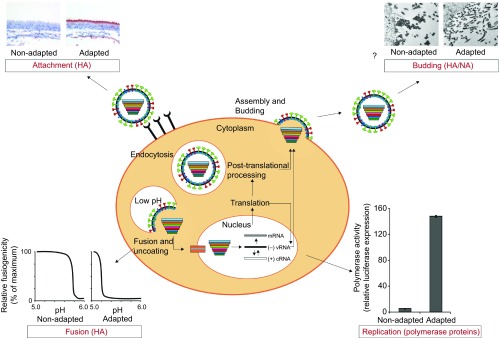Figure 1.

Traits important for airborne transmission of influenza virus between mammals. Increased binding of HA to appropriate cells of the URT of mammalian host cells contributes to the airborne transmissibility. Increased acid stability of the HA was also observed in airborne transmissible virus. Adaptation of the polymerase complex is necessary to facilitate increased replication in the mammalian host cell and is a likely determinant of airborne transmissibility. Although this has not (yet) been shown directly, the release of single viral particles instead of aggregates may aid the airborne transmissibility of the virus, which may be regulated by the HA–NA balance. Virus attachment and budding images were described previously.123 Fusion and replication data are unpublished. The fusion picture is hypothetical and shows a non-adapted HA with a high pH threshold for fusion and an adapted HA with a decreased pH threshold for fusion. The replication figure contains data of the Indonesia/5/05 polymerase complex and Indonesia/5/05 airborne transmissible polymerase complex by Herfst et al.15
